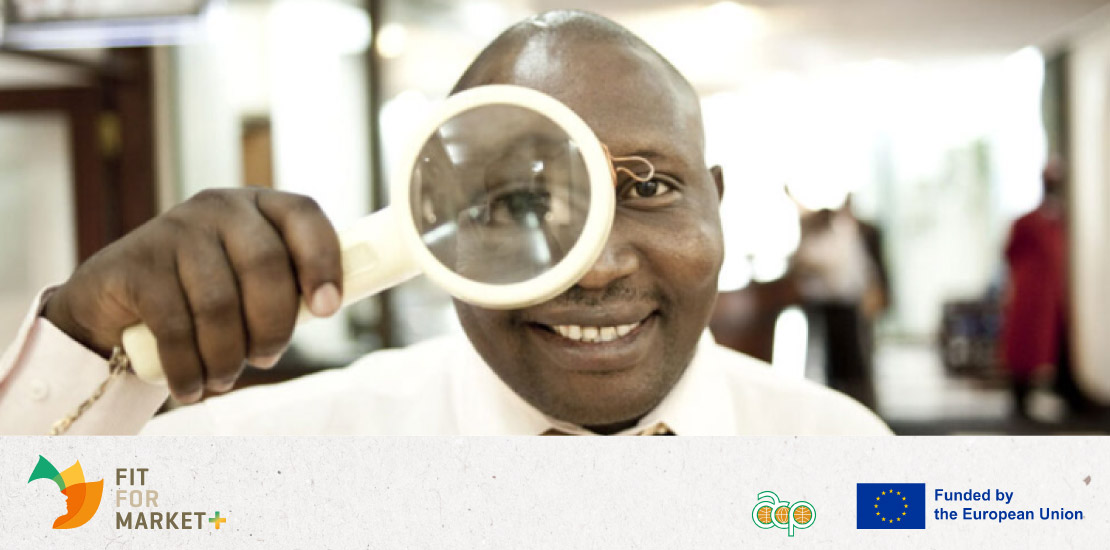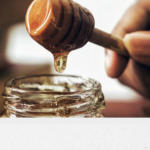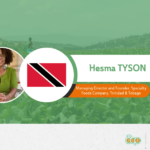- 19/05/2025
- Posted by: Gaetan Dermien
- Category: Uncategorized

| Changes to EU and GB pesticide maximum residue levels COLEAD’s monitoring of pesticide regulations covers maximum residue limit (MRL) changes in both the EU and Great Britain (GB). Note that EU MRLs still apply in Northern Ireland (GB covers only England, Scotland, and Wales).
How will ACP producers/exporters be affected? Changes to EU/GB MRLs also apply to products that are exported to the EU/GB. Growers producing for export may need to adapt their practices to meet the new MRL or, if this is not possible, stop using these products and look for an alternative method of pest management.
What should ACP producers/exporters do now? For each plant protection products (PPPs) and crop concerned, the Good Agricultural Practices (GAPs) in place will need to be verified and possibly adapted to ensure compliance with the new MRLs. The GAPs include dose rate, number of applications, and pre-harvest interval. In some cases, adaptations to the GAPs will allow the new MRLs to be met (see Crop Protection database). However, in many cases, especially where the level is reduced to the Limit of Determination (LoD), it may not be possible to meet the new MRL, and growers will have to look for alternative crop protection solutions. This is essential to avoid interception and destruction of exported produce at the EU/GB borders. In case there is no available alternative, manufacturers can consider the option of requesting an import tolerance. The process for approving an import tolerance MRL in the EU can take time and may imply costs. It is recommended to contact the PPP manufacturer to assess the feasibility.
If you have any major concerns about these changes, and fear that you will be left without an effective and locally available alternative, please contact COLEAD at: network@colead.link. |
In this news, ‘key active substances’ refer to those used/registered in one or more ACP country on horticultural crops that are frequently exported regionally or internationally. It is based on information extracted from the latest national lists of registered plant protection products made available by 34 ACP countries. To confirm if your country is included and the version of the list of registered products considered in this review, please refer to the list here. While COLEAD makes every effort to provide comprehensive information about relevant regulatory changes, it is possible that some Plant Protection Products (PPPs) or crops relevant to you are not included in our list of key substances/crops. We recommend therefore that you check the final section of this news, which details all the changes entering into application in 2025, to make sure that you are aware of any other changes that could affect you.
This news is a quarterly update designed to inform you of any changes introduced during the past five months. If you require more frequent updates on EU MRL changes, we invite you to visit our AGRINFO website and subscribe to the twice-monthly AGRINFO newsletter on EU regulations.
Changes to EU MRLs during the period August-November 2024
The European Commission (EC) has recently published new regulations that change certain EU MRLs. These concern 8 substances, including 7 that are of particular importance for ACP horticulture. These changes are presented in Table 1.
In addition, previous changes are also planned to enter into force in 2025. Overall, the following substances present MRLs changes for key crops entering into force during the period January-March 2025, or later (Table 2):
- Tebufenpyrad (applicable from 28 April 2025)
- Fosetyl (applicable from 29 April 2025)
- Flupyradifurone (applicable from 30 April 2025)
- Thiacloprid (applicable from 12 May 2025)
- Zoxamide (applicable from 19 August 2025)
- Acetamiprid (applicable from 19 August 2025)
- Fluxapyroxad (applicable from 11 February 2025)
- Lambda-cyhalothrin (applicable from 11 February 2025)
- Metalaxyl (applicable from 11 February 2025)
- Nicotine (applicable from 11 February 2025)
- Penconazole (applicable from 24 August 2025)
Clicking on the active substance names above will take you to the relevant AGRINFO records, where you will find more details on the changes and crops affected. Links to records are also provided in Table 1 and Table 2.
Changes to GB MRLs during the period January-March 2025
During the period January to March 2025, the GB Health and Safety Executive (HSE) published changes to 20 active substances MRLs within Great Britain, including 13 that are of particular importance for ACP horticulture, see Table 3.
- Methidathion (applicable from 05 May 2025)
- Boscalid (applicable from 17 January 2025)
- Clothianidin (applicable from 17 January 2025)
- Cyantraniliprole (applicable from 17 January 2025)
- Cyflumetofen (applicable from 17 January 2025)
- Isocycloseram (applicable from 17 January 2025)
- Isotianil (applicable from 17 January 2025)
- Tetraniliprole (applicable from 17 January 2025)
- Thiamethoxam (applicable from 17 January 2025)
- Tricyclazole (applicable from 17 January 2025)
- Cyflumetofen (applicable from 28 January 2025)
- Flupyradifurone (applicable from 6 March 2025)
- Propamocarb (applicable from 1 April 2025)
- Fluopicolide (applicable from 1 April 2025)
In addition, previous changes are also planned to enter into force in 2025. Overall, Table 4 presents substances concerned by MRLs changes for key crops entering into force during the period January-March 2025, or later.
Further Proposed MRL changes
A further 3 proposed (draft) MRL changes have recently been notified to the WTO (Table 5), of which one is key in ACP horticulture (benthiavalicarb).
All draft regulations on MRL changes are notified to the World Trade Organization (WTO) under the WTO Sanitary and Phytosanitary Information Management System for a commenting period of 60 days. This obligation applies to all member countries of the WTO, as the lowering of MRLs might lead to trade barriers. This is an opportunity to be informed in advance of proposed changes, and to take any necessary action before the new regulation comes into force. It is also an opportunity to submit concerns about potential difficulties (trade barriers) that these changes could create. WTO member countries can submit comments via their WTO National Contact Point.
What should ACP producers/exporters do now?
For each plant protection products (PPPs) and crop concerned, the Good Agricultural Practices (GAPs) in place will need to be verified and possibly adapted to ensure compliance with the new MRLs. The GAPs include dose rate, number of applications, and pre-harvest interval. In some cases, adaptations to the GAPs will allow the new MRLs to be met. However, in many cases, especially where the level is reduced to the Limit of Determination (LoD), it may not be possible to meet the new MRL, and growers will have to look for alternative crop protection solutions. This is essential to avoid interception and destruction of exported produce at the EU/GB borders.
We invite you to consult COLEAD’s Crop Protection database which provides information on good agricultural practices. To date, it is one of the few sources of this information specifically dedicated to the horticultural sector in ACP countries. It includes the pesticide Maximum Residue Levels (MRLs) set by the EU and Codex Alimentarius for key horticultural crops in ACP countries. It also provides the GAPs (dose rate, interval between treatments, pre-harvest intervals) that ensure compliance with these MRLs. The GAP data for the use of specific PPPs has been obtained from a combination of sources including COLEAD field trials, data from the manufacturers, and scientific literature.
To prevent build-up of resistance, and to promote the use of low-risk substances, we recommend that users systematically check if alternative products are available. We recommend that you also access other databases and information sources, such as the CABI BioProtection Portal; this is a publicly available tool that provides information on registered biocontrol and biopesticides around the world. By specifying the country, crop, and/or pest/disease, users can easily discover a comprehensive list of registered products suited to their specific needs.
Before applying any Plant Protection Products (PPPs) in a given country, it is important to ensure that the product is registered for use by the national competent authorities.
In case there is no available alternative, manufacturers can consider the option of requesting an import tolerance. The process for approving an import tolerance MRL in the EU can take time and may imply costs. It is recommended to contact the PPP manufacturer to assess the feasibility.
This publication has been developped by the Fit For Market Plus programme, implemented by COLEAD within the framework of Development cooperation between the Organisation of African, Caribbean and Pacific States (OACPS), and the European Union (EU).
This publication has been produced with the financial support of the EU and the OACPS. Its contents are the sole responsibility of COLEAD and can under no circumstances be regarded as reflecting the position of the EU or the OACPS.





